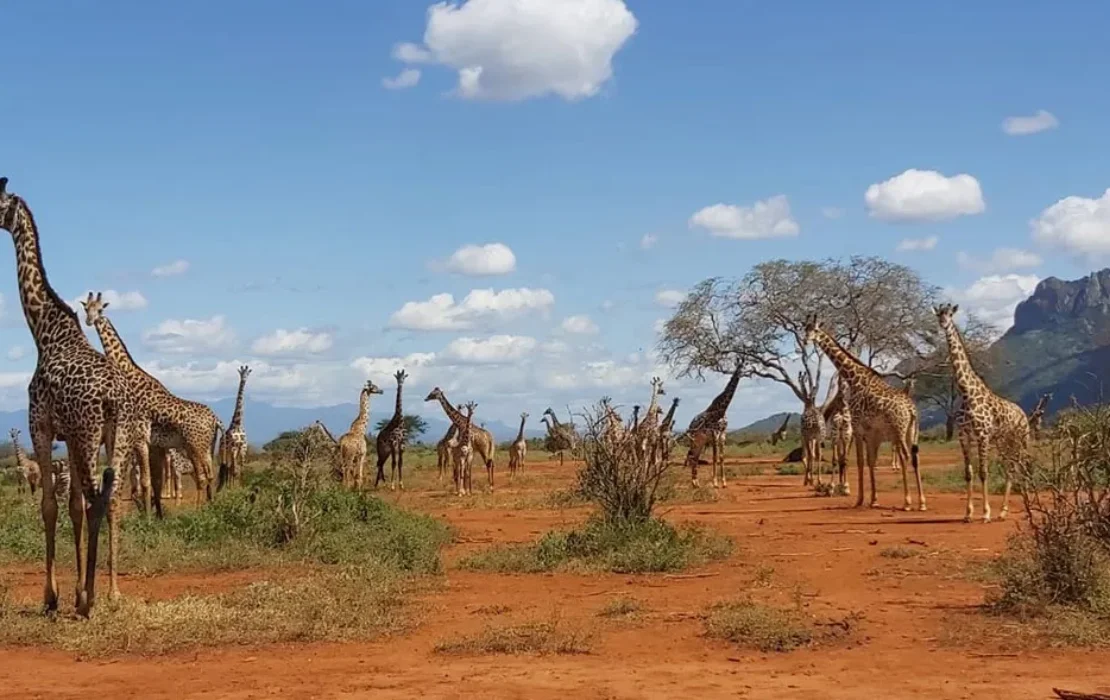With us the world is not far away
The Best Time to Visit Tsavo West National Park is during the dry season, which typically occurs from June to October. During this period, vegetation is sparse, making wildlife easier to spot, and animals mass around water sources, providing excellent opportunities for game viewing. Additionally, the dry season coincides with Tsavo West's peak tourist season, offering optimal weather conditions for safari activities and wildlife photography.
Finally, Ebony Global Travel & Tours invites you to go for a Kenya Safari adventure that transcends boundaries, forging a connection to nature's grandeur. Let us be your gateway to Tsavo West National Park Safari for breathtaking landscapes, thrilling wildlife, and authentic cultural interactions, creating memories that will forever resonate in your heart..
Tsavo West National Park is characterized by the Chyulu Hills to the east, the Yatta Plateau to the north, and the sprawling plains that provide a haven for a variety of wildlife.
Famous for crystal-clear waters and underwater viewing of hippos and fish through glass windows.
Dedicated to the conservation of black rhinos, offering a chance to see these endangered species up close.
A peaceful lake on the border with Tanzania, popular for birdwatching and boat safaris.

Red Elephants: Witness the striking red hue of Tsavo elephants, caused by the red soil they use to dust themselves.
Birdwatching: Explore diverse avian species with over 500 recorded, including ostriches, hornbills, and weaver birds.
Cultural Insights and Photography: Learn about the local Taita people's traditions and their harmonious coexistence with wildlife. Capture stunning landscapes, wildlife interactions, and the park's unique geological formations. Go for night safaris to spot nocturnal animals such as hyenas, civets, and genets in their natural habitat.
Indulge in extraordinary adventures tailored exclusively for you, as our tailor-made tours unlock hidden gems and create unforgettable memories.
Enjoy warm, dry weather perfect for safaris in Maasai Mara, Amboseli, and Tsavo National Parks. It's an excellent time for birdwatching with migratory birds present.
Continues to be warm and dry, ideal for wildlife viewing. Baby animals are often seen, and it's a great time to visit the beaches.
The beginning of the long rains, with increasing humidity. Wildlife is still visible, but roads in some parks may become challenging.
Peak of the long rains. Some lodges close, and roads can be muddy. However, the landscape is lush, and there are fewer tourists.
The rains begin to taper off. The scenery is green and beautiful, and parks are less crowded, making for peaceful game drives.
Dry season starts. Wildlife becomes easier to spot as vegetation thins out. Great time for visiting Maasai Mara and other major parks.
Peak safari season as the Great Migration arrives in Maasai Mara. Expect large crowds and higher prices, but unparalleled wildlife experiences.
Prime time for the Great Migration in Maasai Mara. Dry and pleasant weather across the country, perfect for safaris and beach holidays.
Continues to be excellent for safaris with the migration still in Maasai Mara. Fewer tourists than in August.
Dry season continues with excellent game viewing. The migration begins to move back to Serengeti, but wildlife is still abundant.
Short rains start. Wildlife viewing remains good, and the rains rejuvenate the landscape. Fewer tourists and lower prices.
Short rains end, and the holiday season begins. Warm weather, vibrant landscapes, and great wildlife sightings make it a festive time to visit.